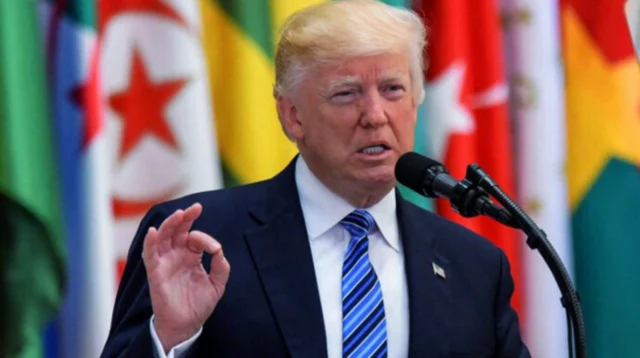This has made the next Fed interest rate hinge in October 2025 to be the central topic globally as it is anticipated that there will be a quarter-point cut in the federal funds rate by the Federal Reserve.
According to the future data of the CME FedWatch Tool the likelihood that a rate cut will occur to bring the target range to 3.75%-4% is 97 percent, lower than 4%-4.25%. This announcement is an indication of the ongoing attempt by the central bank to strike a balance between the various risks of the economy in the face of dwindling growth, the still lingering inflation pressure, and the growing uncertainty amid the current government shutdown by the U.S government.
The stance of Fed Chair Jerome Powell has been that the central bank has not changed its perspective, but that it should be cautious rather than desperate. However, the economic environment has changed since the previous policy session. The need to be monetarily flexible has been exacerbated by a mixture of slowing job growth, slowing business investment, and price pressure that remains. With the approaching of the October meeting, investors are considering that this cut is the commencement of a long-term easing period or a one-time adjustment to soften the economic weak spots.
Weighing Employment Weakness Against Inflation Risks
The sluggish rise in the employment rate in the United States is one of the key factors influencing the decision of the Federal Reserve. In September 2025, the data of the private-sector indicated that the momentum of hiring has slowed down in a variety of industries, and the growth of wages slowed down as well, the first time in 18 months. Fed has viewed these trends as the initial indicator that the labor market might be losing its resilience which will eventually cripple consumer spending and business confidence unless curbed.
The rate of inflation is still higher than the 2% target, but Fed officials consider the threat of further deterioration of the job market to be more urgent. The reason is that, in as much as inflation has been persistent, it seems to be stabilizing, but the employment numbers demonstrate that the economic momentum is in need of a more imminent threat. According to comments made by Powell in recent times, the idea of economic sustainability is anchored on employment stability and this implies that the central bank is now mainly concerned with avoiding further worsening.
Inflation Pressures And Tariff Effects
Simultaneously, the inflation situation is complicated. The recent tariff changes which have been brought about in 2025 especially on imported industrial goods have been a factor in high inputs. Renewed volatility has also been experienced in energy markets partly because of geopolitical tensions in Eastern Europe and Asia. These forces keep the consumer prices under an upward pressure.
Nevertheless, the Fed feels that a slow reduction of the rate will not be a sure way of fueling inflation should the demand be moderate. The choice can be seen as a calculated gamble, therefore, that inflation expectations are anchored and that the monetary easing can be advanced without compromising the price stability.
The Policy Dilemma: Easing Amid Uncertainty
Another aggravating feature of the decision made in October is that the U.S. government is in its fourth week of being shut down. This has added to the interruption of the release of vital data such as employment reports and inflation indices and the Fed has had to turn on the Fed to external data provided by the private sector, and other indicators provided by the market.
This informational vacuum creates more ambiguity regarding the actual situation with the economy. Powell admitted at a recent press conference that the policy had had to work with incomplete information and pointed out the peculiarity of this decision cycle. This dependence on non-governmental sources of data has raised an argument among analysts on whether this step taken by the Fed can be considered premature or not data-driven enough.
Financial Markets React With Confidence
In spite of this uncertainty, there has been close unanimous pricing in the October rate cut by financial markets. In mid October, bond yields fell drastically and this is a sign that the investor is confident that the Fed will do something to stimulate growth. The equities too have been positively responding and the cyclical sectors like construction, retail and technology have registered fresh momentum. However, the dollar has weakened slightly against major currencies since it has been hit by the low expectations of interest rates which undermine its attractiveness.
The prospects of the market are that another cut of the rate will occur in December 2025 and the overall reduction of the year will be 0.50%. The fact that traders are using futures prices to imply that the Fed will continue accommodative until at least early 2026 is important unless there is a sudden surge in inflation.
Global Repercussions Of The Fed’s Rate Decision
Monetary policy of the Federal Reserve still has strong ripple effects in the emerging markets. Countries like South Africa, Brazil and Indonesia have already had their currency appreciating marginally in expectation of the U.S. rate cut. The reduced U.S. yields are likely to stimulate inflows of capital to the higher yielding emerging markets assets with support of the local currency and elimination of external financing pressures.
This relief however might be short lived. In case, inflation in the United States continues to be high or the Fed implements signs of reduced future easing, emerging markets may undergo fresh volatility. Analysts caution that long-term risk taking is still not popular among global investors as there is a risk of sudden change in the monetary policy in the United States in case the inflation danger escalates in 2026.
Influence On Global Trade And Energy Prices
Another impact that the decrease in the rate may have is indirectly on the global trade dynamics. A weaker dollar would generally reduce the cost of imports by the economies of commodity dependence; it would enhance competitiveness among the U.S. exporters. This interaction may stabilize the world demand in the short run. It can however also keep pressure on the energy markets as it may be fueling industrial activity and the use of fuel when the cost borrowed is low.
In October 2025, oil prices have already increased by a demonstration of the forecast of higher levels of U.S. demand with the easing of policy anticipated. These changes highlight the fact that the domestic policy decisions of the Fed are closely interconnected with the actions of the global market.
Prospects For The U.S. Economy Into 2026
As the Fed plans to enter the last months of 2025, there are doubts whether this rate cut will help to keep the growth going. Economists are split: some think that through the easing cycle they may prevent a deeper downturn, others think that they will make inflation resurrect before prices move back to normal.
The majority view indicates a steady growth of approximately 1.8% in 2026 in case the monetary policy is supportive. But the Fed is on a thin thread where excessively easing may destabilize inflation but a lack of it may halt the recovery process. The November and December gatherings will thus be significant in explaining the way U.S policy is going into the coming year.
The Balancing Act That Defines 2025 Monetary Strategy
The October 2025 rate is the statement of the Federal Reserve that represents the fine line between the goals of modern central banking: to help the job market and to maintain control over the process without losing the struggle with inflation. The economic slowdown, uncertainty of data and global interdependency has met its greatest convergence and this has compelled policymakers to be both precise and restrained.
Whether the rate cut ushers in renewed growth or signals deeper vulnerabilities remains to be seen. Yet, the move underscores a broader truth about 2025’s economic landscape: the world’s financial systems remain deeply tied to the Federal Reserve’s judgment. As investors and policymakers await the next signals from Washington, the question lingers: will this cautious easing pave the way for stability, or merely postpone the next phase of global financial turbulence?





